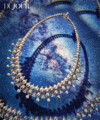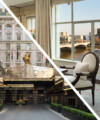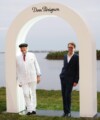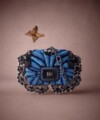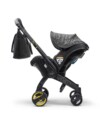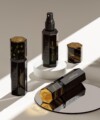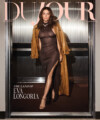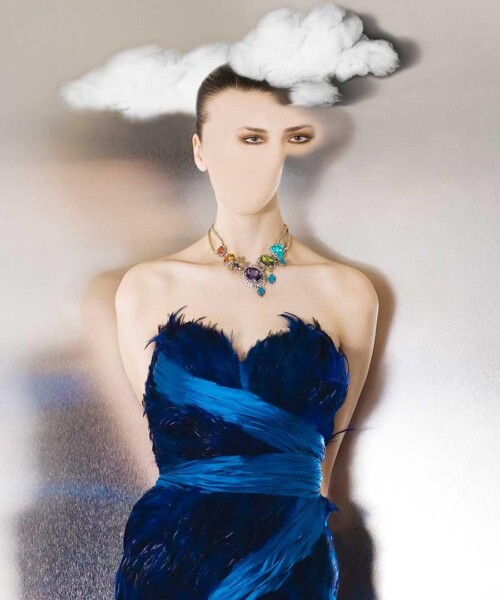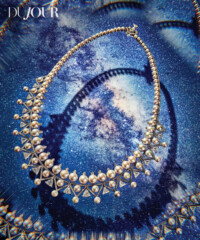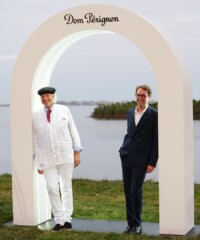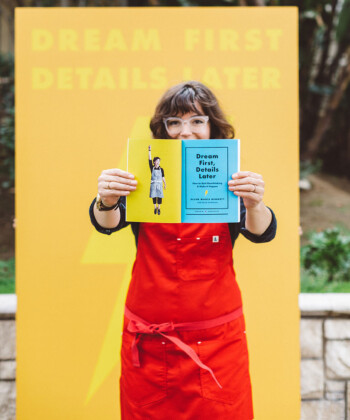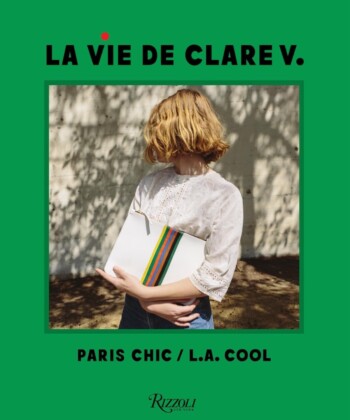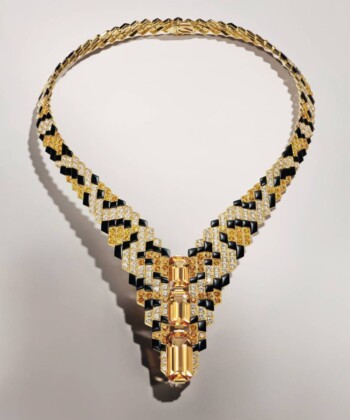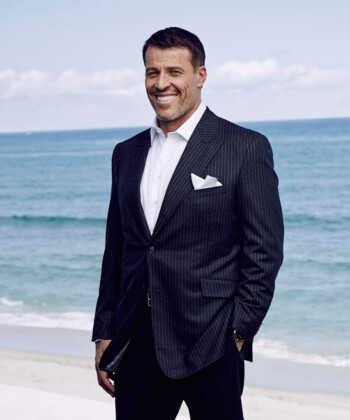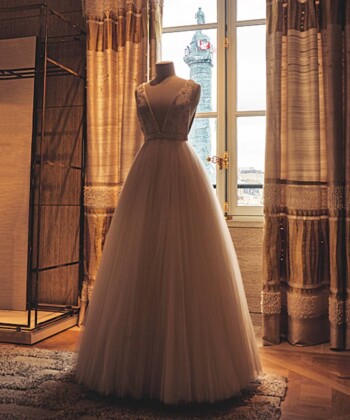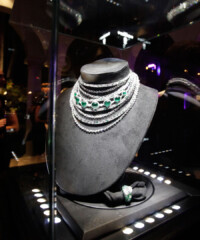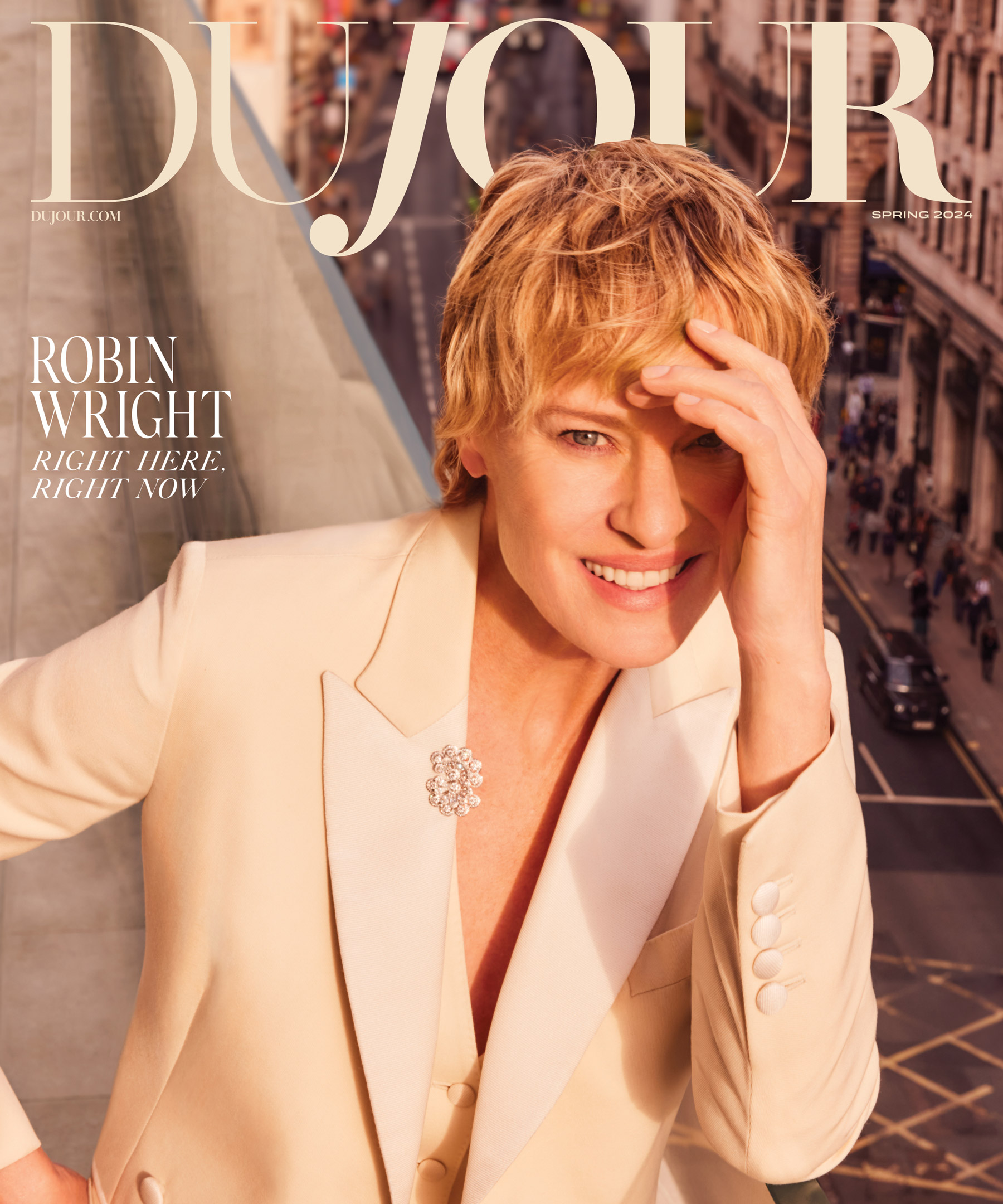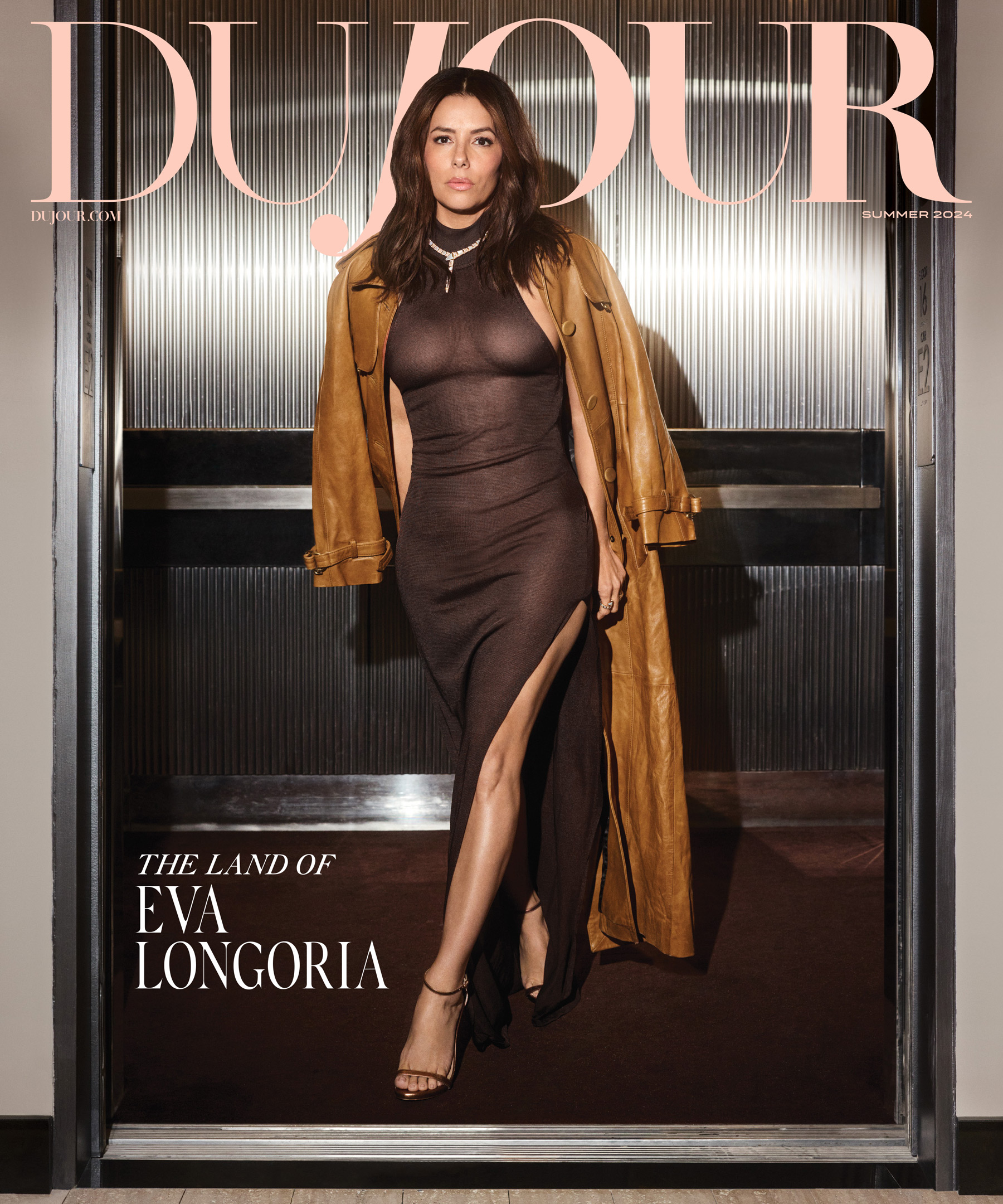The last photograph Victor Skrebneski shot was for a fashion spread. He was just getting into a cab on Michigan Avenue when he noticed something “absolutely knockout.” In a recent interview with DuJour, the photographer recalls the sight from earlier this year: “It was a girl, about 6’2″, no hair, and she had on a red dress around the neck but no back and a full skirt—almost like a Marilyn Monroe dress.” Back in his studio, he tasked the agency with finding her for the shoot—a spread on bandage dresses—and they came back with photos of two women, one of which Skrebneski believed was the girl on the street.
In the end, she wasn’t who he saw, “but this one was absolutely sensational,” Skrebneski says. “She had a beautiful figure; in a dress like that, you have to be tall and show your body. Not everyone can wear that kind of dress.”
 Bandage (2013)
Bandage (2013)
Underlying this story is the kind of forward-thinking, past-forgetting philosophy that the photographer’s held throughout his 60-year career. For Skrebneski, who has shot more than a few of Hollywood’s most striking studio portraits (including the black turtleneck series with Orson Welles, Bette Davis and Andy Warhol in the 1970s and the provocative Chicago International Film Festival posters featuring Anna Nicole Smith in the ’90s), mistakes and regrets are rare, if not nonexistent. Take, for instance, the discernable blur—a definitive Skrebneski signature—that marks many of his photographs: It originally occurred because “no one told me that I had to hold the camera still,” he says. “So I got lots of blurry pictures and I loved them. That was almost 70 years ago that I started photographing and shaking the camera on purpose, so that I would get that blurry picture.”
 The Chicago native recently visited New York for the 2013 Lucie Awards held on October 27 to be honored for his acheivement in fashion photography. Notably, he was the exclusive photographer for Estée Lauder from 1962 to 1989—launching Cindy Crawford’s career in between—before working with brands like Ralph Lauren, Chanel and Givenchy. He’s in his eighties now, but it’s clear that the photographer hasn’t stopped charging ahead. “The only way to go further is to look to the future,” he says.
The Chicago native recently visited New York for the 2013 Lucie Awards held on October 27 to be honored for his acheivement in fashion photography. Notably, he was the exclusive photographer for Estée Lauder from 1962 to 1989—launching Cindy Crawford’s career in between—before working with brands like Ralph Lauren, Chanel and Givenchy. He’s in his eighties now, but it’s clear that the photographer hasn’t stopped charging ahead. “The only way to go further is to look to the future,” he says.
Ironically, this will involve some looking into the past at the moment. In addition to appearing in a new documentary on Tiffany’s (he was formerly the photographer for the fine jewelry brand), Skrebneski is currently working on his 15th book, simply titled Aging. “It’s all about me getting old,” he explains. “It starts out with a photograph of me maybe six or seven months old—my dad is holding me—and then it just goes to kindergarten through middle school and high school, then meeting people, being with people and photographing them.” The idea came after he kept finding old personal snapshots in drawers and finally decided to edit them—around 300 altogether. “You see all the different people all over the world that I’ve photographed or been with. Maybe they wont like it, but I wouldn’t run anything that makes people look bad.”
In his studio, Skrebneski is so sensitive to his subjects’ satisfaction with his prints that he says he remembers only once having to reshoot someone who didn’t like the photos. What happens more often are cases similar to Dennis Hopper’s diptych. “We were pals for a long, long time,” says Skrebneski, who photographed Hopper in his studio in 1990. Hopper ended up hating the resulting prints until years later, when a television network ran the image with a story on the actor. “He called immediately and said that’s the best photograph I’ve ever had done. And he went on and on about how much he liked it because it was on TV.”
 Dennis Hopper (1990)
Dennis Hopper (1990)
As for what the photographer thinks is his best work, frankly, he just doesn’t look back. “People ask what is my favorite photograph and I always tell them it’s the next one.” His fingers no longer brown from developing film, Skrebneski continues to push boundaries with his photography to this day. “We do everything so fast I cant believe it. My favorite four-letter word is ‘next,’ so we do work quickly.”
Just don’t expect to find Skrebneski on Instagram. “That technology is way in front of me. I don’t know how to send an email. I don’t know how to do any of that stuff that everybody does,” he laughs. The hesitation, of course, isn’t too off-base. “The only thing I fear is when people approach me with a camera is that they’re going to show me their new baby and the way it smiles and how it looks when they shoot it day after day. But that’s like my book about getting old. They’re just doing it already.”
Click through the gallery to see a sampling of Victor Skrebneski’s work through the years.



